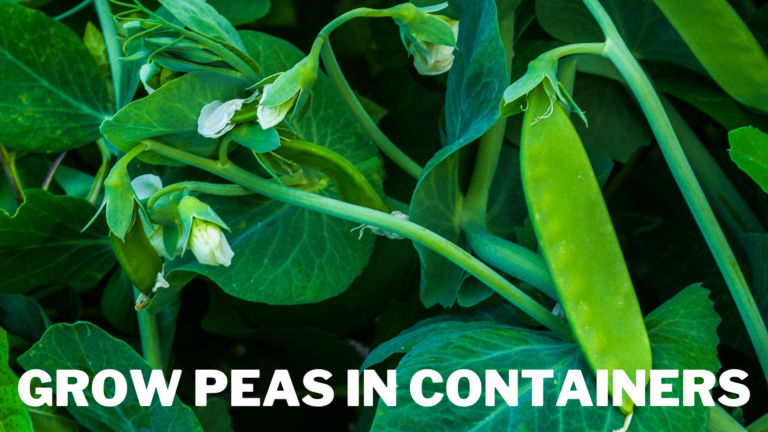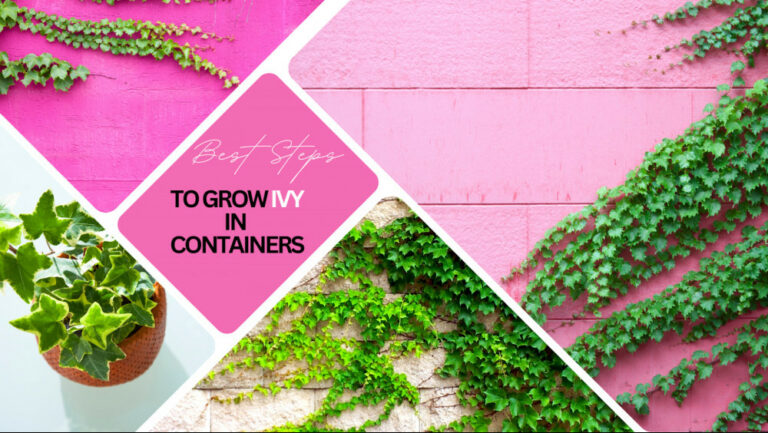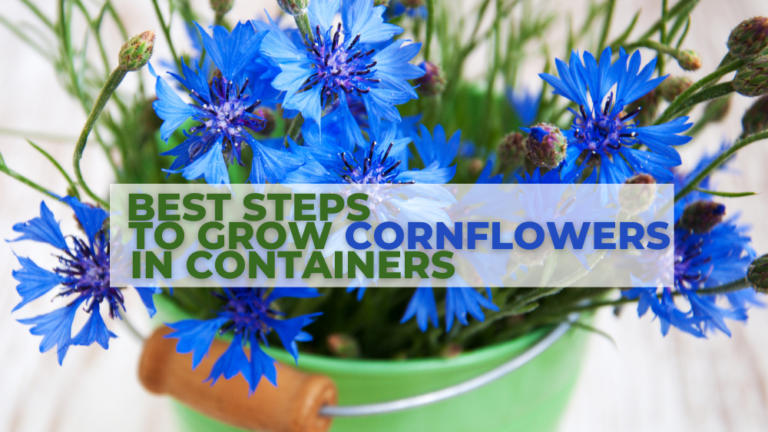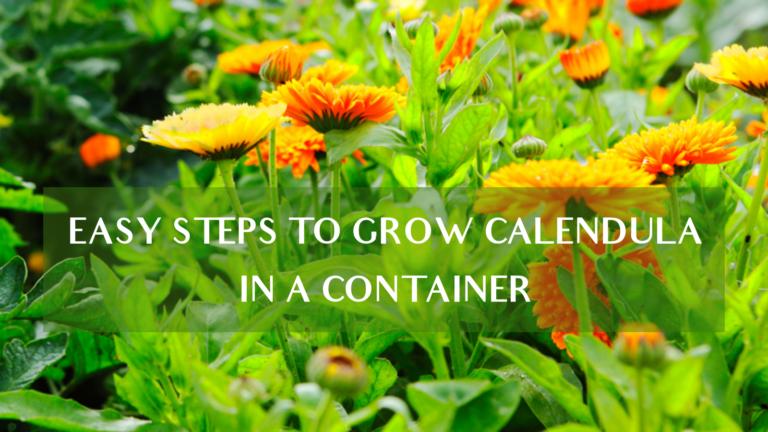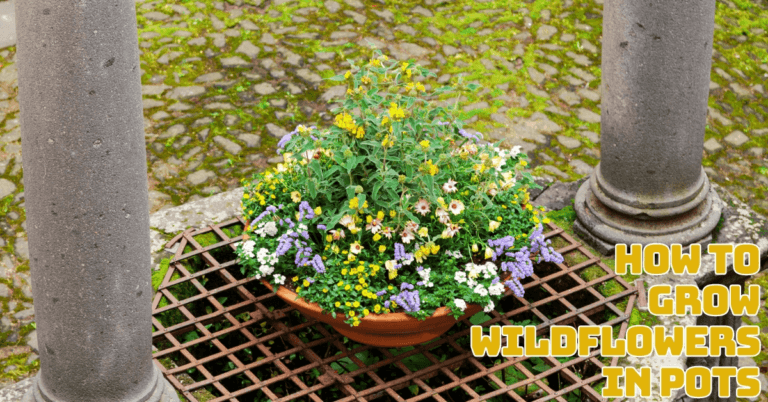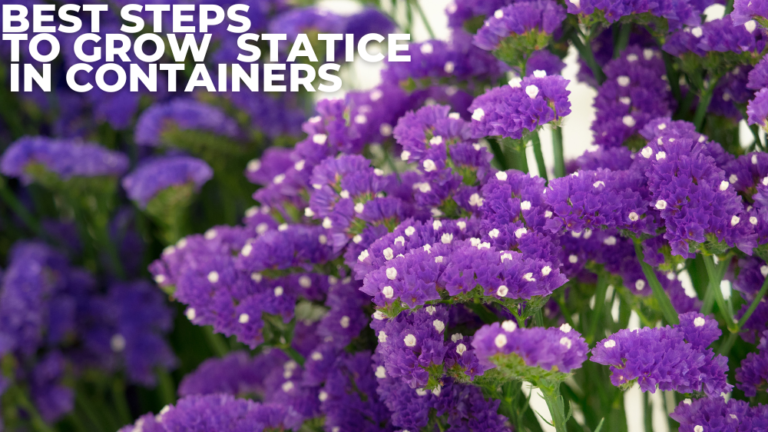Simple Guide To Growing Watermelons In Containers
Simple Guide To Growing Watermelons In Containers
Watermelons can be grown in containers if you have a small garden. Container watermelons are possible and enjoyable whether you are undertaking balcony gardening or simply seeking a better way to use your limited space.
It only takes a little information to figure out how to produce watermelons in containers properly.

History & Origin Of Watermelons
Important findings in northeastern Africa, archeological relics of watermelons, chiefly seeds, dating back 5,000 years, have been discovered.
In an Egyptian tomb dating back at least 4,000 years, a depiction of a huge, striped, rectangular fruit on a platter was found.
In the first century CE, the Greek word pepon, Latin pepo, and Hebrew avattiah were all used to refer to the same enormous, thick-rinded, wet fruit, the watermelon.
Watermelons are depicted with three sweet fruits: figs, table grapes, and pomegranates in Hebrew literature from the end of the second century CE and Latin literature from the beginning of the sixth century CE.
Sudan and its neighbouring nations in northeastern Africa have regularly seen wild and primitive watermelons.
9 Best Types Of Watermelons For Containers
For growing Watermelons in containers, you should know all varieties fitted for containers.
Watermelons come in over 500 different types, all of which may be successfully grown in containers if you follow the appropriate directions. The following are the most popular types for growing in pots:
1. Early Moonbeam Watermelons
It’s a great variety for container gardening. From 5 to 8 pounds, yellow-fleshed with a thin rind.
For northern climates, this is one of the best melons. This sweet, early, and productive watermelon will add flavour to your summer.
2. Bush Sugar Baby Watermelons
Bush Sugar Baby is perfect for smaller gardens. ‘Bush Sugar Baby' produces an average of two 12-pound melons per plant on “space-saving” vines. This icebox variety yields oval dark green fruits with tasty scarlet flesh that can be frozen.
Plants grow 15-24 inches tall, with vines reaching 3½ feet long. This cultivar resists cold temperatures, cracking, drought, and sunburn. ‘Bush Sugar Baby' will be ready to harvest in about 80 days.
3. Crimson Sweet Watermelons
‘Crimson Sweet‘ is a delicious, productive, and disease-resistant open-pollinated picnic-type heirloom variety that remains a favorite among many gardeners.
When harvested, this massive, spherical cultivar has pale green skin with dark green stripes and weighs about 25-35 pounds. This watermelon has rich crimson flesh that is firm and finely textured, with little dark seeds.
‘Crimson Sweet' has a delightfully sweet flavour due to its high sugar content. Fruits have thick rinds that are resistant to damage.
Plants are strong and resistant to anthracnose and fusarium wilt, reaching heights of 15-24 inches with a spread of six to eight feet. In 80 days, you can harvest these luscious, juicy melons.
4. Golden Midget Watermelons
‘Golden Midget' is a little watermelon type to make your melon patch stand out. When fully ripe, the rinds of this open-pollinated cultivar become yellow, making harvesting a breeze.
The round fruits are tiny, weighing only three pounds each, and have lovely pink flesh with black seeds.
‘Golden Midget' is an extremely early cultivar ideal for short-season producers, with fruit ripe in only 70 days.
5. Jade Star Watermelon
Ninety days after seeding, ‘Jade Star' is usually ready for harvest. Each plant produces 3 to 4 fifteen-pound melons. Oval or round fruits with dark green rinds and bright scarlet flesh. Warm areas are ideal for watermelons.
6. Millennium Watermelon
Millennium is gorgeous on the outside with its rich rind pattern that resists fading in the sun, but it also has a dark crimson inside and exceptional meat quality.
Millennium is an early maturing variety with very consistent size and shape. Fruit sizes range from 12 to 15 pounds and are produced on a robust vine.
7. Moon And Stars Watermelon
While the size of the Moon and Stars watermelon varies based on type, it is normally a large and heavy watermelon, weighing up to 50 pounds in some situations.
The dark green fruits are dotted with various-sized yellow spots, giving them a night sky appearance.
The Moon and Stars watermelon is available throughout the summer and has red, pink-red, or yellow flesh, depending on the type.
8. Solitaire Watermelon
Mini, seedless, round varieties, measuring 3½ to 5 lbs. each, are larger than a softball but smaller than a soccer ball.
The flesh is a deep crimson colour and is crisp and delicious. This is an excellent choice for places with a short growing season.
9. Jubilee Watermelon
The Jubilee Watermelon was developed in 1963 at the Florida Agricultural Experiment Station as an open-pollinated variety. Watermelons can be planted directly or transplanted.
We recommend putting seeds every 12′′ along the intended row to guarantee a good stand when direct sowing.
Plants should be thinned to one every two feet once they have emerged. It takes 95 days to reach maturity.
11 Steps Of Growing Watermelons In Containers
Step 1: Choosing A Container
The 1st step in growing Watermelons in containers is to select the right pot. Watermelons in pots are not difficult to grow, although they can be tough.
You must grasp the fundamentals. Watermelons require a deep container due to their extensive taproot.
It will be necessary to use a large pot or bucket with a depth of at least 2 feet and a width of at least half a foot.
Step 2: Prepare Soil
Aside from container size and variety selection, the soil is the most crucial component in producing container watermelons.
It's critical to use the correct soil blend in the container; otherwise, you'll be tethered to your garden hose or watering can all summer.
Using a well-draining mix will dry up too rapidly, affecting plant health and fruit output. If you choose a combination that isn't well-draining enough, the soil will remain wet, depriving the roots of oxygen and perhaps causing root rot.
Watermelons are heavy feeders who dislike being exposed to the elements. Choose a good potting mix and combine it with compost. I make a half-and-half mix of organic potting soil and finished compost.
The potting soil keeps the mix light and well-draining, while the compost absorbs and holds water. In addition, the compost provides nutrients and helpful soil bacteria to the container.
Step 3: Planting
It is strongly advised that you start your watermelons from seeds. These lovely fruits have a sensitive root structure that isn't fond of being transplanted.
Transferring your plant may cause it to become stressed. Watermelon seeds should not be planted in more than three pots at a time.
Watermelons should be planted between the end of the winter and the beginning of spring. It normally takes 6 to 10 days for the seeds to germinate.
Once the seedlings are visible above the soil's surface, thin out the weak ones and leave just the strongest.
Step 4: Pollinate By Hand
On the same vine, watermelon plants produce both female and male blooms. Pollinators like bees and butterflies will naturally pollinate the plants, but a little more aid from you in hand pollination will increase the possibilities of fruit formation.
Step 5: Locating A Sunny Area
Find a sunny area that is out of the way of severe winds and has easy access to water. Because the pot will be heavy and difficult to move once you've added soil, place it in this location while it's still empty.
Step 6: Supporting
The watermelon plant needs to be supported as well. You may use a trellis or some sticks for this. In either case, be sure your support can support the weight of melons without breaking.
At least 4 feet tall is required for the trellis or sticks. Use a stretchy material like pantyhose or a T-shirt to form a hammock under the fruits as they grow. This will help them grow and keep them from snapping off the vine as they get bigger.

Step 7: Watering
Proper watering is one of the most important parts of container growing watermelons. Because watermelons demand a lot of water, it's critical to maintain the soil evenly moist–but not wet–at all times, and the water must drain easily from the bottom.
Water your watermelon plant daily if you're growing it in a container and twice if it's hot. Reduce the watering after the fruits begin to expand and mature.
During this time, water slowly and gently. To get the sweetest melons, avoid overwatering and underwatering.
Step 8: Temperature
Warmth is a favourite of watermelons. Tropical climates are ideal for growing them. They may, however, grow in moderate climates. The optimal temperature for growing watermelons is between 65° and 85°F (18°-30°C).
You may also grow them from 50 to 95 degrees Fahrenheit (10-35 C). Your fruits, on the other hand, will be tasteless if the temperature drops below 50 degrees Fahrenheit.
Step 9: Fertilize
You should Fertilize for growing watermelons in containers. Begin fertilizing the plant with a full-spectrum liquid fertilizer.
Use a fertilizer with less nitrogen as the plant begins to flower and appear to set fruit. Consider using a liquid seaweed fertilizer.

Step 10: Pruning
Allow only the main vine to develop to ensure a healthy and fruitful plant. Remove side branches when the plant is young to prevent them from growing more. Remove any stems that are broken or unhealthy as well.
Step 11: Harvesting
When the watermelon is fully ripe, it should be harvested. Watermelons are harvested 65-90 days after planting or 30-50 days after flowering.
- When you scratch the skin with your nails, it's a good sign that they're ready to harvest.
- It's time to pick your fruit if it separates immediately away.
- The base spot, or the area that comes into contact with the ground, transforms from white to cream.
- The pedicel or stalk that connects the mother plant to the child plant will be dry.
- Depending on the cultivar, the watermelon will be ready to harvest 65 to 90 days after planting.
- The tendrils of the vine turn yellow and die when the watermelon is ready to be harvested.
- The watermelons are still immature if the tendrils are green.
- When you tap a ripe watermelon, it makes a dull, hollow sound.
- The fruit will transform from white to yellow on the soil side, indicating it is ready to harvest.
- The end of the stem of a ripe melon usually has a delicious scent.
To harvest the watermelon, you must cut it off the vine using a sharp knife or garden trimmer. It's that simple.
Diseases & Pests Of Watermelons
1. Bacterial Fruit Blotch
Seedlings, young plants, and fruits with water-soaked areas that spread and become necrotic are frequently caused by the bacterium Acidovorax avenae subspecies citrulli.
The leaves may become brown, but the fruit is the most visible symptom. The rind may fracture and spill a sticky yellow substance.
If a copper fungicide is given as soon as indications of bacterial fruit blotch are discovered, symptoms can be controlled.
2. Anthracnose
This seed-borne fungus can be difficult to see because it appears as little spots on your plants and fruits.
As they mature, these spots enlarge and turn black or gray, and additional recessed regions on your fruit may appear.
Crop rotation and a neem oil treatment will help protect this and future harvests from anthracnose.
3. Gummy Stem Blight
When the gummy stem blight fungus is present, older tissues are harmed more frequently than fresh ones.
The first indicators of disease are black, wrinkled spots on leaves and dark or sunken areas on stems and fruits.
Affected plants quickly collapse in humid or rainy conditions. Controlling gummy stem blight is tough, although copper fungicides can help if administered as soon as it emerges.
4. Powdery Mildew
Powdery mildew, one of the most frequent plant diseases, does not spare watermelons. When the illness is active, leaves appear to have a white powdery substance, though fruits are usually unaffected.
Leaves darken and die as the powdery mildew spreads across the plant, exposing fruits to sunburn and weakening the plant.
Although neem oil is a wonderful remedy, trimming your watermelon plant to increase air circulation can be just as effective.
5. Downy Mildew
The angular leaf patches created by downy mildew as it works through watermelon leaves are distinctive.
On the undersides of infected leaves, they may begin as yellow spots, but they quickly turn brown with purple spores.
Downy mildew won't harm your fruit but will weaken your plants, reducing production. This noxious mildew can be controlled with neem oil.
Extra Helpful Tips for Growing Watermelons In Containers
- Start the seeds indoors or in a greenhouse in mild and short summer regions as soon as possible, immediately in a container or a biodegradable pot.
- Watermelons are heavy feeders that use many organic materials when growing them in containers. Every 3-4 weeks, apply manure or compost to the side of your potted melon plant. If there isn't enough room in the container, scrape and remove the topsoil.
- Stress to the plant during fruit maturation (changes in temperature, pests and diseases, overwatering, and lack of water) leads to less flavorful and sweet fruits.
- Growing melons vertically on a trellis is a terrific way to save limited space. Make a hammock out of netting, a bag, or a flexible cloth to support the fruit.
- Allowing the plant to set up too many fruits is the key to getting the best quality. For large fruit kinds, 2-4 fruits are sufficient at a time, while 4-6 fruits are suitable for smaller varieties.
- Plant in a series for consistent harvests. Plant 2-4 plants and repeat in two weeks.
Recipes With Watermelons
Raw Watermelons are great to taste. I love the 2 recipes with watermelon. I'm sharing the recipes you can try, and don't forget to let us know in the comment box how you liked them.
Watermelon Smoothie
Prep time: 5 minutes | Total time: 5 minutes | Servings: 2
Ingredients
- Fresh watermelon: 1½ cups cubed & seeds removed
- Frozen strawberries: 1 cup
- Lime juiced: 1 medium, 30 ml
- Medium ripe banana: ½
- Unsweetened plain almond or coconut milk: ½–¾ cups
- Chia seeds: 1 tablespoon
Instructions
- Blend all of the ingredients in a blender until creamy and smooth, adding additional almond milk if the mixture is too thin or more frozen strawberries or ice if it is too thick.
- Taste and season to taste, adding extra lime for acidity, banana for sweetness, or watermelon for a stronger watermelon flavour if desired.
- Serve and top with extra chia seeds to mimic watermelon seeds! Fresh is best, but leftovers can be kept in the refrigerator for 1-2 days if covered.
Grilled Watermelon
Prep time: 15 minutes | Total time: 15 minutes
Ingredients
- Watermelon: 2 2-inch slices
- Extra virgin olive oil: 2 tablespoons
- Fresh cilantro: ½ cup, chopped
- Limes: 2, juiced
- Salt to taste
Instructions
- Each watermelon round should be cut into four pieces, for a total of eight pieces. Brush the pieces with olive oil and a little lime juice on each side, keeping at least half of the lime juice for after they've been cooked. Then, season them with a pinch of salt on both sides.
- Set a high temperature on an outdoor gas grill. The watermelon should be grilled on each side for 3 to 5 minutes until grill marks appear.
- Remove the steak from the grill and season with the remaining lime juice and cilantro. Season with salt and pepper to taste. Salt enhances the flavour of the dish, so season to taste.
Conclusion
I love watermelons. I enjoy them all summer long. They are fruits with many health benefits. As you can see in this article, growing watermelons in containers is pretty easy, which is especially useful if you only have a small garden.
We live in a cold climate, so taking the pots into our garage is pretty useful should there be night frost. As you can see in this blog post, growing watermelons in containers are pretty easy.
I trust you enjoyed this Simple Guide To Growing Watermelons In Containers article. Please stay tuned for more blog posts to come shortly. Take care!
JeannetteZ
>>>Please click here to read more about watermelons and melons on my LivingTheVeganLifestyle.org website<<<
>>>Please click here to read my all-inclusive article about Container Gardening<<<
Are you interested in homegrown herbs and medicine? Please click here to find out more about it!
Your Opinion Is Important To Me
Thoughts? Ideas? Questions? I would love to hear from you. Please leave me your questions, experience, and remarks about this Simple Guide To Growing Watermelons In Containers article in the comments section below. You can also reach me by email at Jeannette@Close-To-Nature.org.
Disclosure
This post may contain affiliate links. I earn from qualifying purchases as an Amazon Associate and other affiliate programs. Please read my full affiliate disclosure.
You might also enjoy these blog posts:
Growing Strawberries In Hanging Containers
Best Gardening Lessons To Learn
Simple Ways To Grow Radishes In Containers
7 Steps Of Growing Beans In Containers
10 Easy Steps Of Growing Cucumbers In Containers


















